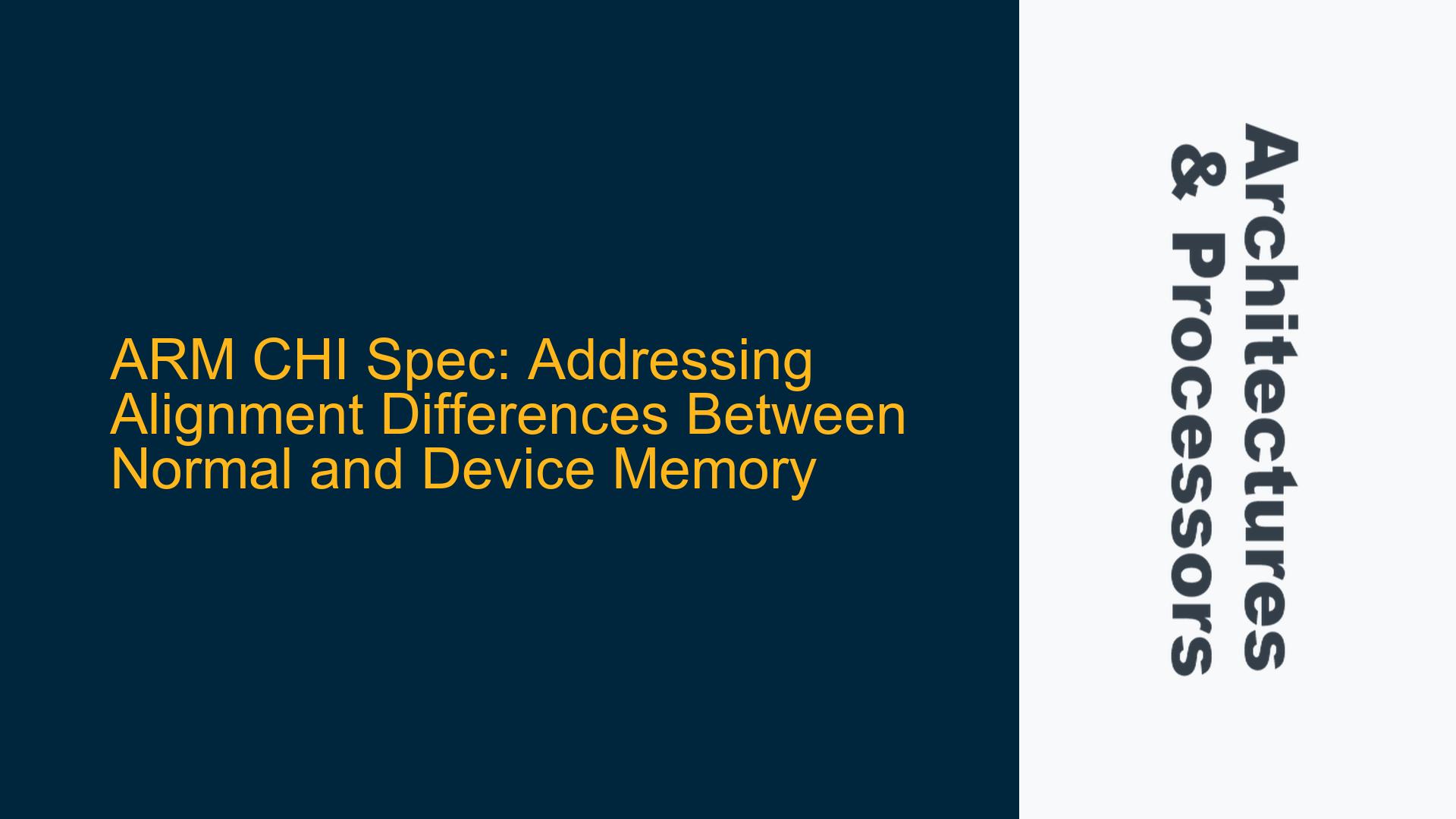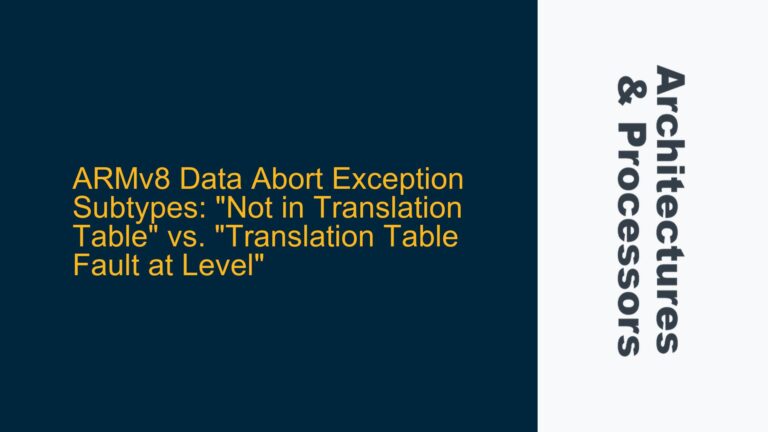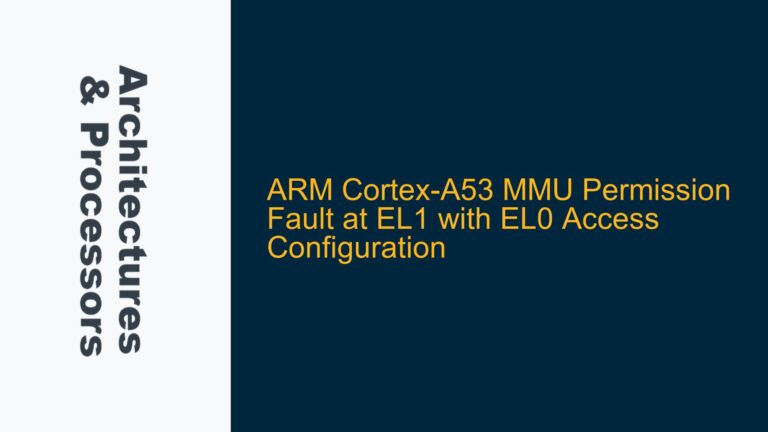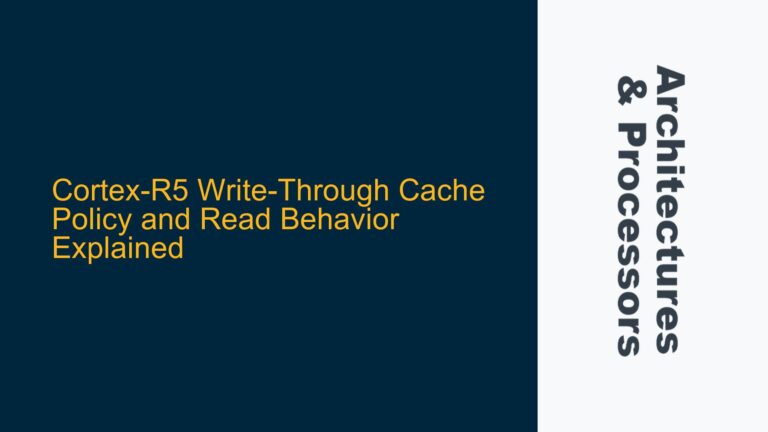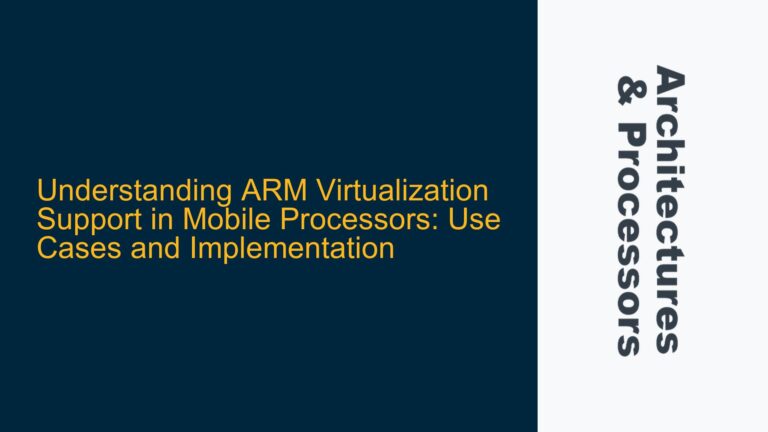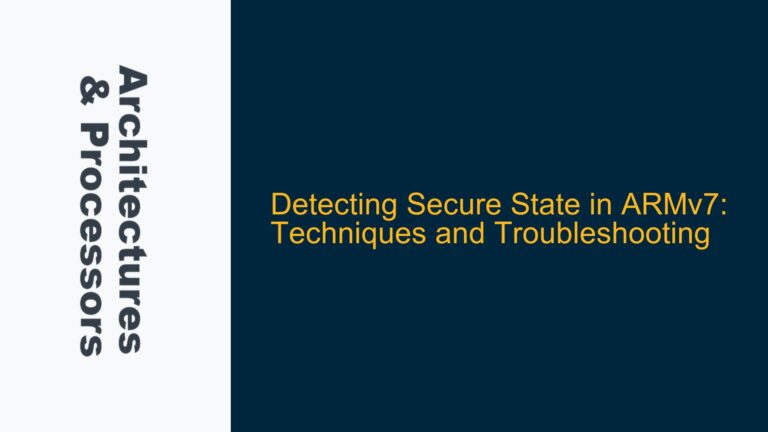ARM CHI Spec Address Alignment Rules for Normal vs. Device Memory
The ARM Coherent Hub Interface (CHI) specification defines distinct address alignment rules for normal memory and device memory. These differences arise from the inherent characteristics and usage patterns of each memory type. Normal memory, typically used for general-purpose data storage and processing, follows a more relaxed alignment rule to optimize performance and flexibility. In contrast, device memory, which interfaces with peripherals and hardware registers, requires stricter alignment to ensure predictable and atomic access to hardware resources. This distinction is critical for system designers and firmware developers to understand, as misalignment can lead to performance degradation, data corruption, or even system failures.
Normal memory alignment rules are designed to maximize cache efficiency and minimize memory access latency. ARM architectures often employ cache lines that are 64 bytes in size, and aligning data to these boundaries ensures that memory accesses are optimized for cache utilization. On the other hand, device memory alignment rules are stricter because they must guarantee atomicity and consistency when accessing hardware registers. Device memory accesses often involve side effects, such as clearing interrupt flags or triggering hardware actions, which necessitate precise alignment to avoid unintended behavior.
The CHI specification enforces these alignment differences to maintain compatibility with the ARM architecture’s memory model and to support the diverse requirements of modern embedded systems. Understanding these rules is essential for debugging issues related to memory access, optimizing system performance, and ensuring reliable operation in mixed-memory environments.
Architectural and Functional Reasons for Alignment Differences
The alignment differences between normal and device memory in the ARM CHI specification stem from their distinct architectural roles and functional requirements. Normal memory is primarily used for storing application data, code, and runtime structures, where performance and flexibility are paramount. Device memory, however, is used for interfacing with hardware peripherals, where predictability and atomicity are critical.
Normal memory operates under the assumption that data accesses are frequent, sequential, and often cached. The ARM architecture optimizes for these patterns by allowing unaligned accesses in certain cases, as long as they do not cross cache line boundaries. This flexibility enables higher performance and simplifies software development, as developers do not need to manually align every data structure. However, unaligned accesses that cross cache lines can incur performance penalties due to additional memory transactions and cache line fills.
Device memory, in contrast, is typically uncached and accessed directly by hardware peripherals. These accesses must be atomic and predictable to ensure correct operation of the hardware. For example, writing to a device register might trigger a hardware action, such as starting a DMA transfer or clearing an interrupt flag. If such a write were unaligned or split across multiple transactions, it could result in undefined behavior or data corruption. The CHI specification enforces strict alignment rules for device memory to prevent these issues and ensure reliable hardware operation.
Additionally, device memory often has specific access size requirements. For instance, a 32-bit peripheral register must be accessed using a 32-bit write or read operation. Misaligned accesses could result in multiple smaller transactions, which might not be handled correctly by the hardware. The CHI specification’s alignment rules for device memory ensure that all accesses meet these requirements, providing a consistent and reliable interface to hardware peripherals.
Debugging and Resolving Alignment-Related Issues in ARM Systems
When working with ARM systems that utilize both normal and device memory, alignment-related issues can manifest in various ways, including data corruption, system crashes, or unexpected hardware behavior. To diagnose and resolve these issues, developers must follow a systematic approach that includes verifying memory alignment, reviewing hardware specifications, and implementing appropriate software fixes.
The first step in troubleshooting alignment issues is to identify the type of memory involved. If the issue occurs during normal memory access, the problem may be related to cache line boundaries or unaligned data structures. Tools such as ARM’s DS-5 Debugger or Lauterbach Trace32 can be used to inspect memory accesses and identify misaligned transactions. Developers should also review the software code to ensure that data structures are properly aligned and that unaligned accesses are avoided where possible.
For device memory issues, the focus should be on verifying that all accesses comply with the hardware’s alignment requirements. This includes checking the access size and ensuring that the address is aligned to the required boundary. Hardware documentation, such as the peripheral’s reference manual, should be consulted to determine the correct alignment rules. If misaligned accesses are detected, the software must be modified to use aligned addresses and appropriate access sizes.
In some cases, alignment issues may be caused by incorrect configuration of the memory management unit (MMU) or cache settings. For example, if device memory is mistakenly marked as cacheable, it could lead to unexpected behavior due to cache coherency issues. Developers should review the MMU and cache configuration to ensure that memory regions are correctly mapped and that caching is disabled for device memory.
To prevent alignment issues in the future, developers should adopt best practices for memory management and access. This includes using aligned data structures, avoiding unaligned pointers, and carefully reviewing hardware specifications for alignment requirements. Additionally, static analysis tools and runtime checks can be used to detect potential alignment issues during development, reducing the likelihood of encountering problems in production systems.
By understanding the alignment rules for normal and device memory in the ARM CHI specification and following a systematic approach to debugging and resolution, developers can ensure reliable and efficient operation of their ARM-based systems.
